TL;DR: We chose the Darn Tough Hiker Micro Crew Socks as the best hiking socks to prevent blisters. Our key reasons for choosing these are:
- High-quality wool blend
- Specially placed cushioning, perfect for any length of hike/activity
There’s no sugarcoating it; blisters are genuinely awful. If you’ve hiked for long enough, chances are you’ve gotten a blister on your foot at some point.
I’ve gotten a blister while hiking more times than I’d like to admit. The day I purchased my first pair of wool socks was one of the best days of my life.
Wool, especially Merino wool, is fantastic for hiking. Not only does it help to prevent blisters, but the wool helps to wick moisture and keep you warm.
Choosing the right hiking socks can seem daunting. I know it was for me. There are so many different brands to choose from that you might think they’re all the same. But they aren’t.
If you don’t want to spend your valuable time figuring out which sock is best for you, read my guide to find the best hiking socks to prevent blisters.
Why You Get Blisters and How To Avoid Them
First off, check out this helpful video full of blister prevention tips:
Why Do I Get Blisters Every Time I Hike?
Many things can cause blisters, but ultimately, it comes down to unwanted friction between your foot and socks or boots.
Hiking boots that are too tight or too loose can cause blisters to form on your feet. Sweat can be a significant contributor to getting a blister.
Purchasing the correct hiking socks for your situation and adequately tightening your shoes are the first steps to prevent blisters.
What Kind of Socks Do You Wear to Prevent Blisters While Hiking?
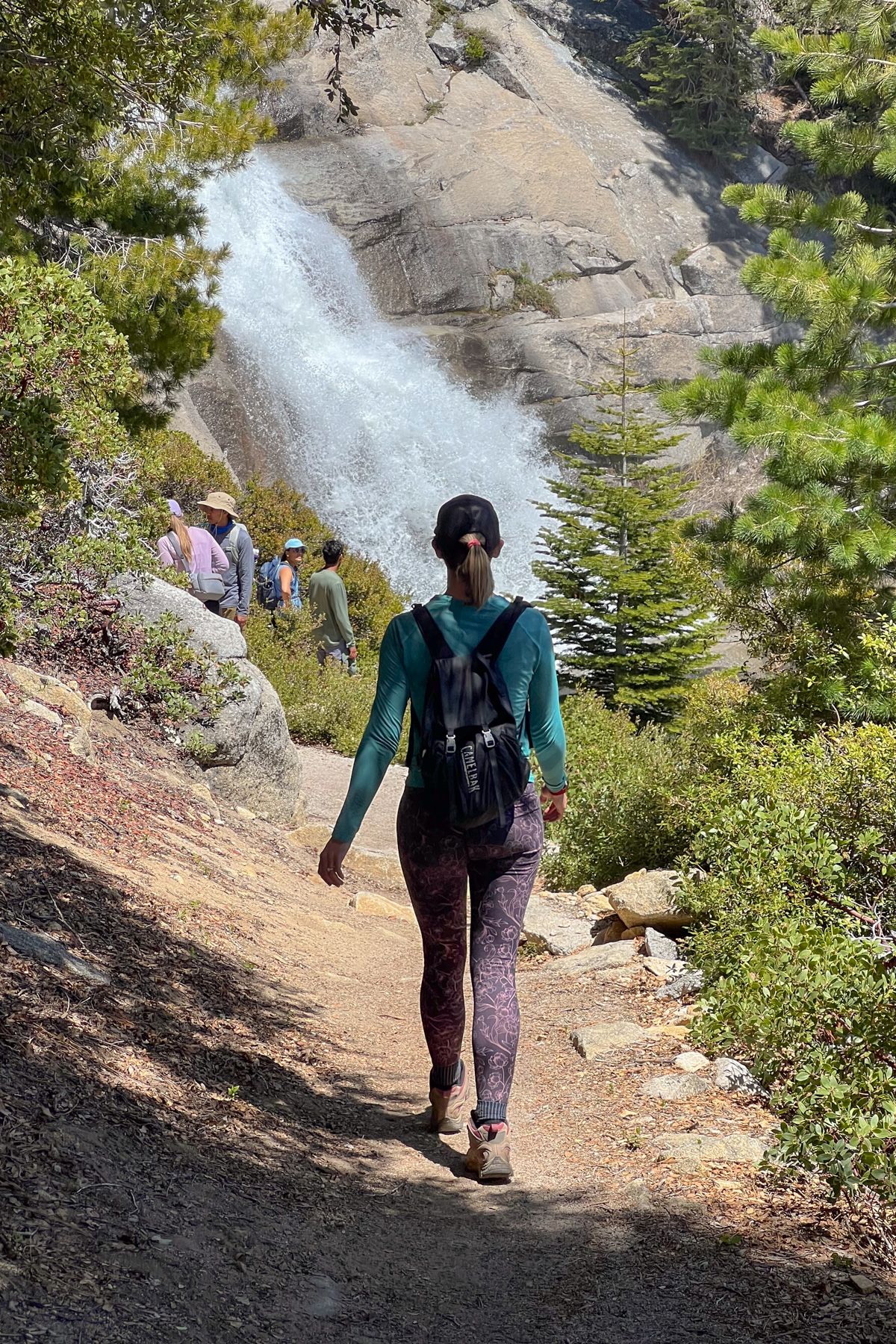
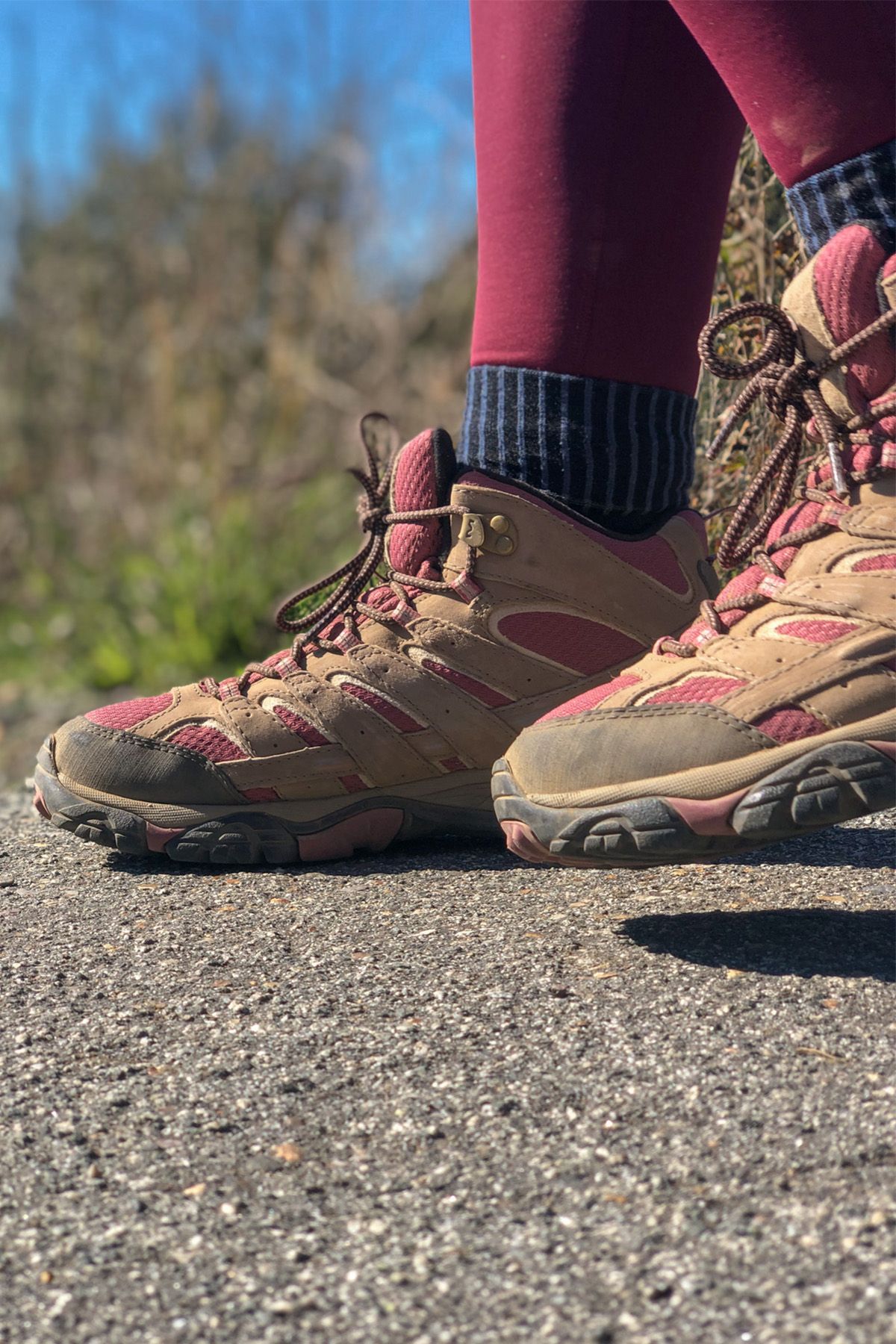
The best type of hiking socks for blister prevention are wool socks– specifically merino wool socks. Merino wool is a finer style that protects your feet shockingly well.
Merino wool can keep you warm during cold hikes but will also keep your feet cool during the summer. Its moisture-wicking properties help keep your feet dry and prevent blisters.
Thicker socks can also help to prevent the friction that causes these blisters. Another (less desirable) option is wearing two pairs of socks or liner socks if yours aren’t thick enough.
#1 Darn Tough Hiker Micro Crew Cushion Socks
Best Merino Wool Hiking Sock
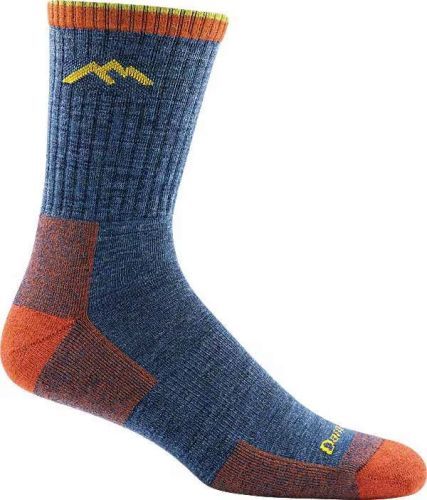
Material: 61% merino wool/36% nylon/3% Lycra spandex
Length: Crew
Cushioning: Medium Cushioning
Try the Darn Tough Hiker Micro Crews if you’re looking for a hiking sock you can trust from a leading brand.
Darn Tough uses merino wool in their socks, but they ensure you get the highest quality wool. Their wool is shrink-treated, which enhances the comfort and durability.
The medium-level cushioning Darn Tough uses underneath the foot perfectly balances cushion and comfort. The Darn Tough hiker sock is also an ideal length.
If you’re like me and are a fan of hiking in all scenarios, Darn Tough is the perfect brand. Wool crew socks are perfect for a summer hike or even a hike in cooler weather.
Darn Tough socks have a higher price point but are worth every penny.
Pros
- Medium-level cushioning for the perfect balance
- High-quality merino wool
- The ideal length for any type of scenario
Cons
- Pricier than other socks
#2 Balega Blister Resist Quarter Socks
Best Short Hiking Socks
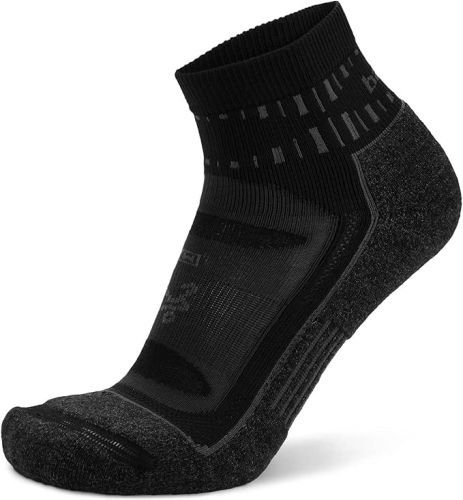
Material: 32% nylon, 32% drynamix, 30% mohair, 4% microfibre, 2% elastane
Length: Short
Cushioning: Ultra High
But sometimes you want a short ankle sock, and Balega Blister Resist Quarter Socks are the best I’ve found!
Balega is a lightweight hiking sock that uses an interesting yet effective combination of fibers. This proprietary blend consists of mohair and Drynamix.
Drynamix wicks moisture out to help prevent blisters, and mohair helps keep moisture in. Keeping the moisture in will help to keep your feet warm during winter hiking and cool during the summer.
These socks don’t use merino wool and are one of the only hiking socks I stand by that don’t. I have friends who use this sock daily and have only good things to say about them.
They come in an exciting style that might not fit everyone, but if you prefer short socks, they won’t disappoint.
Even if you’re not wild about short socks in your hiking boots, the extra cushioning makes up for this.
Pros
- Uses a proprietary blend of fabrics that work astonishingly well
- Extra cushioning
- Keeps feet warm and cool in all types of weather
Cons
- Short in length
- Interesting colors/style
#3 Smartwool PhD Outdoor Light Crew Socks
Best for Summer
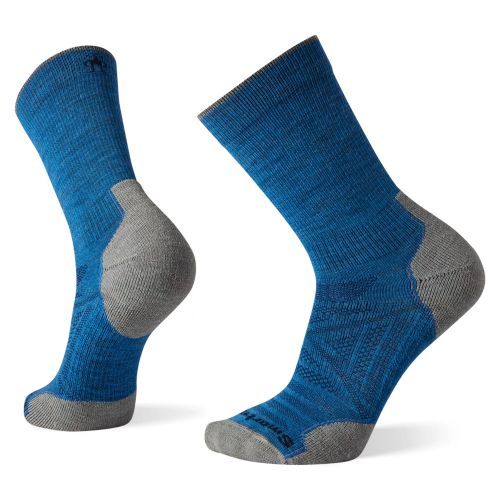
Material: 56% Merino Wool, 41% Nylon, 3% Elastane
Length: Crew
Cushioning: N/A
Looking for summer hiking socks, you can trust? There’s no better option than the Smartwool PhD Outdoor Light Crew Socks.
Smartwool takes pride in pioneering merino wool as a key material for socks, and their socks are some of the most sustainable hiking socks on the market.
The length of these socks makes them great for summer and most other hiking environments. Smartwool PhD socks have added mesh zones for increased breathability.
The seamless toe section sets these Smartwool socks apart from others, which increases comfort while helping with blister prevention.
The downside to these socks being so popular is sometimes they are out of stock. I’d suggest staying updated with their website if you want to purchase a pair of your own!
Looking for more summer hiking socks? Check out our complete list!
Pros
- Seamless toe box for extra comfort
- They take pride in being sustainable
- Mesh zones for increased breathability
Cons
- The stock might be limited
#4 Wrightsock CoolMesh II Crew Socks
Best Budget Option
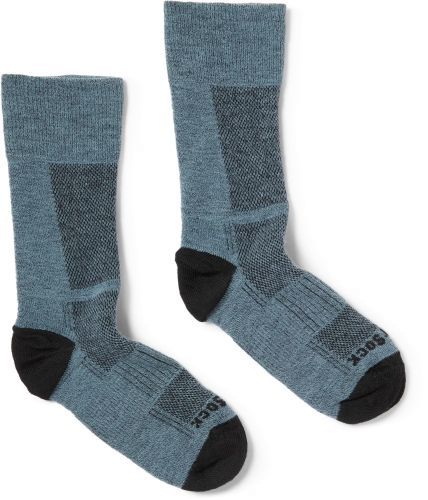
Material: Inner layer: 70% recycled polyester/26% nylon/ 4% LYCRA spandex; outer layer: 71% recycled polyester/24% nylon/5% LYCRA spandex
Length: Crew
Cushioning: Light Cushioning
Sometimes, it’s the most budget-friendly option sock that catches your eye. That was the case when I found the Wrightsock CoolMesh II crew socks.
Not only are the Wrightsock CoolMesh hiking socks cheap, but they offer the same quality that other high-end socks do.
Wrightsocks are double-layer socks that utilize materials to maximize moisture wicking while reducing blisters. The 2-layer style is very unique but effective!
They don’t use Merino wool, which slightly lowers the quality, but their LYCRA spandex is a good alternative. You won’t have to worry about having wet socks.
The outer layer of the Wrightsocks is mesh, which helps with the airflow and is particularly lovely to have on those summer hikes!
Other hiking socks like Injinji socks could be an excellent cheap alternative to the Wrightsocks if you like toe socks. I prefer Wrightsocks’ because they are more durable and last longer.
Another reason I love the Wrightsock CoolMesh is because they use recycled nylon or polyester, making the products more sustainable.
Pros
- Made with a 2-layer system of fabric to maximize moisture control and blister prevention
- Extremely Affordable
- Uses mesh for increased airflow
- Great walking socks
Cons
- Doesn’t use merino wool
#5 Fox River Wick Dry Alturas
Best Hiking Sock Liners
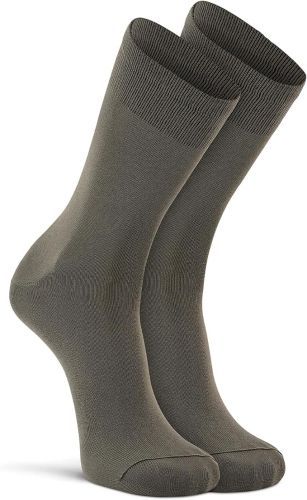
Material: 93% Polypropylene, 6% Nylon, 1% Spandex
Length: Crew
Cushioning: No Cushioning
Have you ever wanted to add a thin extra layer to your hiking socks, but you only own thick socks? That’s where the Fox River Alturas liner socks come in to help!
High-quality hiking socks are one thing, but sometimes they don’t do the job independently. It’s nice to have a liner sock for days that are too cold for just one sock but too hot for two.
Sock liners might look similar to compression socks but serve a different purpose.
The Fox River Alturas are a cheap pair of liner socks that won’t make you feel guilty for lugging them around. Even though the Fox River Alturas are ultralight socks, they are as durable as can be.
Fox River has been around since 1900, so they know something about keeping you warm in the woods.
You shouldn’t wear the Alturas alone while hiking because they have no cushion.
But pairing these liner socks with wool hiking socks keeps your feet cool and helps with blister prevention while reducing friction between your foot and the outer sock.
Pros
- Affordable
- Are ultralightweight
- Reduce friction between your skin and the main sock
Cons
- They can be uncomfortable on longer hikes if worn by themselves
#6 Thorlos Thick Cushion Hiking Socks
Most Comfortable Hiking Sock
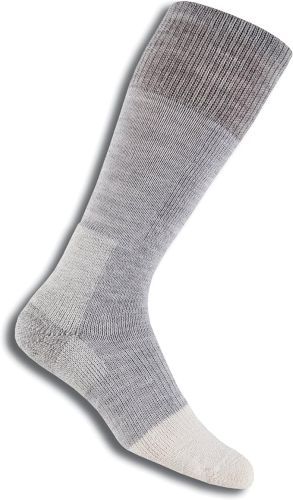
Material: 60% worsted wool, 27% THORLON acrylic, 11% nylon, 2% spandex
Length: over-the-calf
Cushioning: Thick Cushioning
Being comfortable on a hike is a priority of mine and should be for you, too. Look no further than the Thorlos Thick Cushion hiking socks for full-comfort hiking.
The combination of wool and Thorlon acrylic helps create a top-of-the-line moisture-wicking product. By placing the cushioning at the heel and toe areas, Thorlos adds maximum comfort.
The cushioning in the Thorlos hiking socks is in the heel and upper foot because those are heavy-impact areas. The other positions also have moderate cushioning to help against boot pressure.
These specific Thorlos socks are over-the-calf, best for colder climates, and may cause sweaty feet in the warmer months.
They include a moisture panel that other very thick socks don’t have, perfect for letting your foot breathe.
Pros
- Specific placed cushioning for optimal comfort
- It comes with a moisture panel
- Made from special Thorlon fibers for extra smoothness
Cons
- The over-the-calf length might not be suitable during the warmer months
#7 Feetures High-Performance Max Cushion Crew Socks
Most Versatile
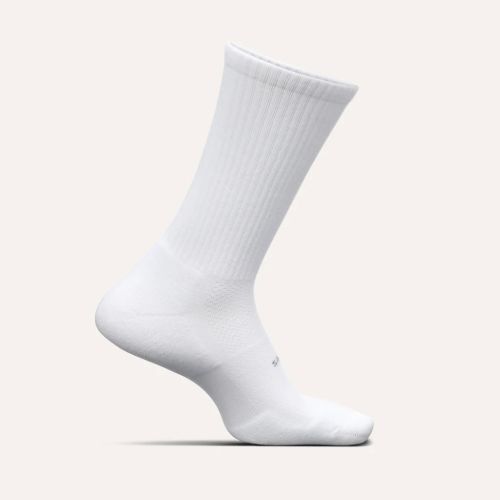
Material: 72% Polyester; 25% Nylon; 3% Spandex
Length: Crew
Cushioning: High-density Cushioning
If you, like me, engage in a range of different activities, it’s great to have a versatile sock. That’s why I love the Feetures High Performance Max socks!
The Feetures Max socks are high-performance socks built for various activities, including hiking, skateboarding, running, etc.
You want synthetic socks to include a type of fiber that reduces moisture. Like the other Merino wool socks on this list, the iWick fibers of Feetures do just that: they keep moisture out using their synthetic blend.
Their toe design makes the Feetures perfect for other activities like skateboarding. There’s no irritation at the toe due to their toe seam design.
There are only two colors that you can currently choose with the Feetures High-performance socks, but their 1” cuff still makes them an ideal fit for any outfit.
Pros
- An excellent toe structure for zero irritation during any activity
- iWick fibers to wick moisture out
- 1” cuff, perfect for any outfit
Cons
- It only comes in black/white colors
#8 Wigwam Hiking Outdoor Midweight Crew Sock
Best Moisture Wicking Hiking sock
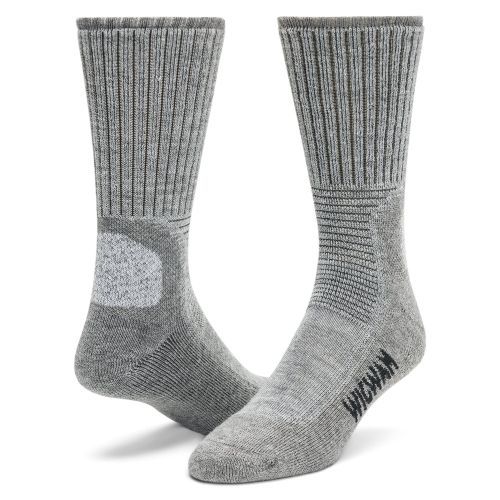
Material: 32% Polypropylene, 29% X2O® Acrylic, 23% Stretch Nylon, 15% Polyester, 1% SpandexColor
Navy/Pewter: 34% X2O® Acrylic, 31% Polypropylene, 23% Stretch Nylon, 11% Polyester, 1% Spandex
Length: Crew
Cushioning: Light Cushioning
Sometimes, water is unavoidable when you’re hiking. Or, your feet may sweat more than you’d like. It’s times like these when you want the best moisture-wicking sock, the Wigwam Hiking Outdoor.
What makes the Wigwam so good at removing moisture is their unique technology called “Ultimax®.”
Their use of hydrophilic yarn transports moisture up the sock for easier evaporation. At the same time, hydrophobic fibers repel the moisture.
Like most hiking socks, these special fibers help to reduce painful blisters, but they do it in a unique way.
The cushion on the Wigwam Hiking Outdoor socks is light, which helps for more casual wear but might not be your ideal style for longer hikes.
What I also love about the Wigwam Hiking Outdoor sock is its weight. It’s considered a midweight sock, but cushioning gives the sock thickness in certain areas.
Pros
- It uses a unique fabric called “Ultimax” to remove and repel moisture
- Midweight sock
- Helps with blister prevention
Cons
- Light cushioning might not be optimal for long-distance hikes
#9 Farm to Feet Damascus Crew Lightweight Socks
Best Cushioned Hiking Sock
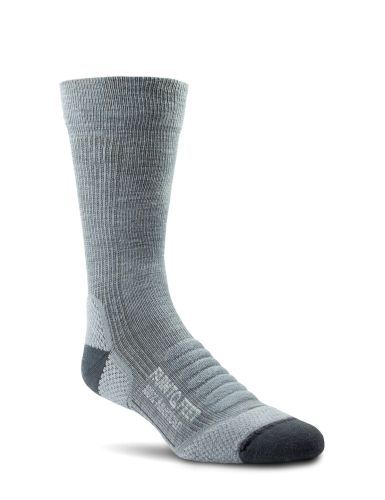
Material: 51% US Merino Wool, 46 % US Nylon, 3% US LYCRA® Spandex
Length: Crew
Cushioning: Targeted Light Cushioning
If you’re an avid thru-hiker gearing up to do the Appalachian Trail, you’ll want a high-quality cushioned merino sock. The Farm to Feet Damascus sock is just that!
The Damascus socks contain merino wool that’s 100% sourced from U.S. farmers.
Merino wool helps with comfort and blister prevention better than most synthetic products. Farm-to-Feet socks have targeted high-density cushioning, which is essential for long hikes.
Thicker socks help to reduce the friction between your foot and hiking shoes. You won’t stand a chance on a thru-hike with thin socks.
But if you don’t particularly like long-distance hikes, then these socks might not be necessary.
Pros
- Targeted high-density cushioning where it matters
- 100% U.S. sourced merino wool
- Perfect for long-distance hiking
Cons
- A thicker sock than most and might not be suitable for shorter hikes
Buying Guide For What Kind of Socks To Wear to Prevent Blisters While Hiking
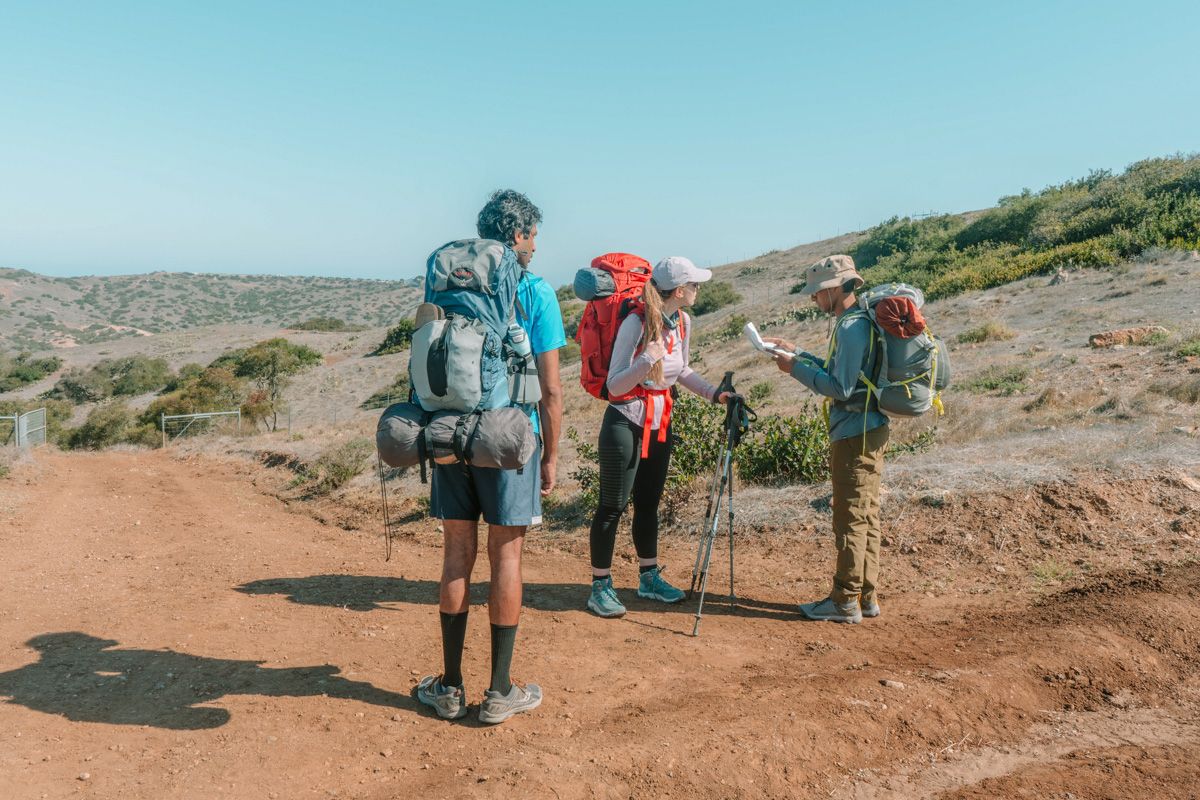
Material
For socks to reduce blisters, the material matters. Choosing Merino wool hiking socks will help remove moisture from the socks.
Synthetic materials like nylon and polyester are there to help increase the durability. A synthetic sock is also good at moving the moisture away from your skin to evaporate.
Mesh isn’t extremely common but can make your sock more breathable and reduce the sweat.
Moisture-Wicking
You’ll inevitably sweat while hiking. It happens to the best of us. The last thing you want is for your foot to get too wet from the sweat, causing blisters.
Cotton socks do a poor job of removing moisture, so you’ll want to find socks made from wool or moisture-wicking synthetics.
Thickness/Cushioning
A sock’s thickness and cushioning can determine how well it prevents blisters. How much cushioning you require will depend on the hikes you plan to take.
The thicker the cushioning, the better protected you’ll be during longer hikes. Thinner socks will cause blisters on long hikes, and I don’t recommend them.
Another option is to go with double-layer socks if this feels better for you.
Fit and Anti-Slip Technology
The sock’s fit is crucial as you don’t want something too loose that’ll have your foot sliding around. But it should also not be too tight to restrict blood flow.
Anti-slip technology can be helpful but isn’t as necessary when your hiking shoes are tight enough.
Comfort
While this might seem obvious to some, your sock’s comfort is also essential! Choosing the right thickness, height, and material for the situation will go a long way during your trek.
In the long run, choosing a wool sock will be more comfortable and help prevent blisters.
Durability
Nobody likes buying a product they’re excited about only to have it break a few weeks later, and that’s also true for hiking socks.
If you’re looking for durable hiking socks, make sure they include synthetic materials such as nylon or polyester.
FAQs About Hiking Socks to Prevent Blisters
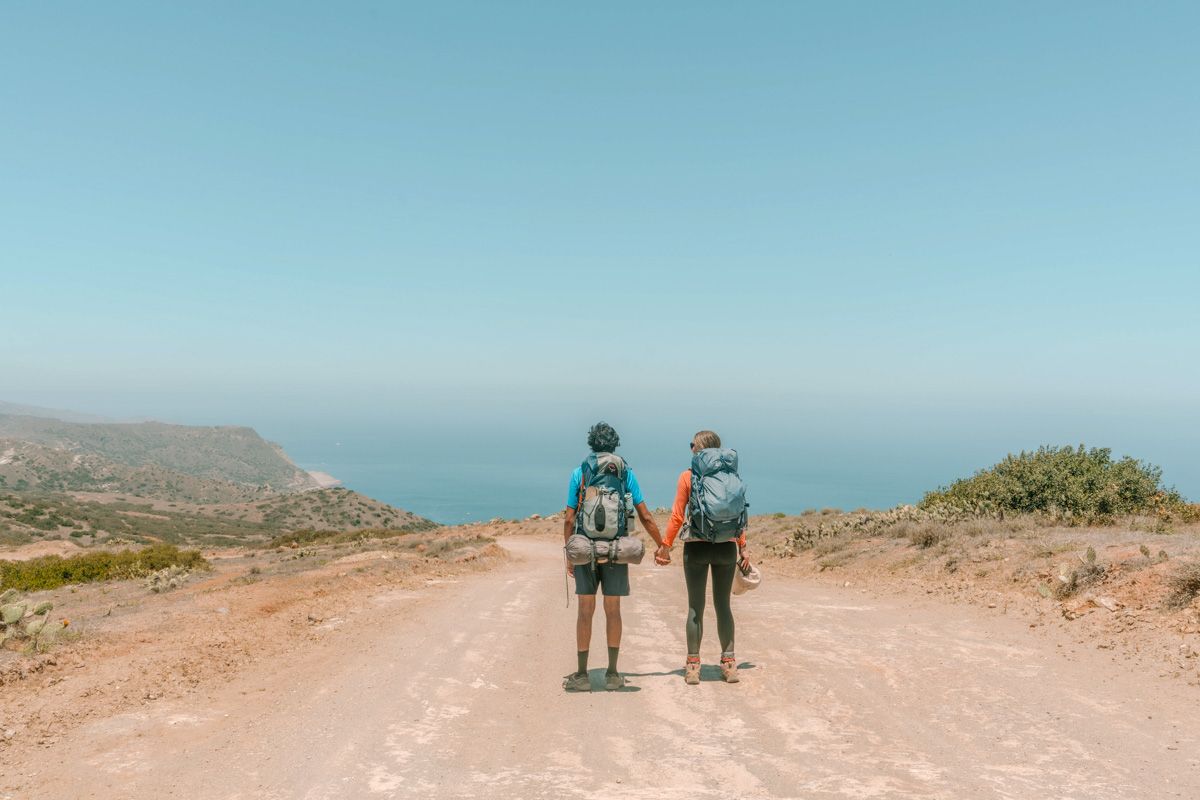
Do merino wool socks prevent blisters?
Merino wool will help remove moisture by allowing it to evaporate quickly. This type of wool also reduces friction and, in turn, reduces blisters.
How do you prevent blisters when hiking?
The best way to prevent blisters when hiking is to choose hiking socks that are made from moisture-wicking material (either synthetic or wool) and use a liner sock.
Will wearing two socks prevent blisters?
Wearing two socks may help to prevent blisters. A double sock reduces friction and increases cushioning even better if they are quality socks like a Darn Tough.
Does putting Vaseline on your feet prevent blisters?
Lightly putting Vaseline on your feet can help prevent blisters, mainly if chafing occurs often. The vaseline will help to reduce friction, and this helps to reduce the blisters.
Conclusion: Our Pick for the Best Hiking Socks to Prevent Blisters

When picking the best hiking socks to prevent blisters, I’d choose the Darn Tough Hiker Micro Crew Socks over the rest!
Darn Tough is my favorite hiking socks brand, and it’s a company you can trust. They use a merino wool blend that’s both durable and excellent for reducing moisture.
Their micro crew socks have the perfect balance of cushioning for every type of adventure. You can use Darn Tough socks for long-distance hiking but also as everyday walking socks.
No more do you have to worry about keeping your feet dry on your next trek through the mountains.
While these pricey Darn Tough Hiker socks might not be the best budget hiking socks, they are my overall choice for the best hiking socks to prevent blisters.
ABOUT THE AUTHOR

Phillip Anderson
Phillip Anderson is a freelance travel writer, personal trainer, and adventure enthusiast from Virginia Beach. Growing up, he spent most of his days either hiking in the Shenandoah, going to the beach, or working out. He is currently traveling through Latin America while working on projects to share his adventures with the world.

Mimi McFadden
Founder & Editor-In-Chief
Mimi McFadden grew up in Santa Cruz, California, and founded The Atlas Heart in 2013. Mimi has always been into fashion to some extent, but really started paying attention to it more at the age of 28 when she no longer lived out of a backpack as a full-time traveler. Once she started owning her personal style (and had an actual closet), she focused on finding the perfect balance of comfort and versatility for her wardrobe. As one of the main clothing testers at The Atlas Heart, she is always on the lookout for fun new clothing brands to try out that can add style and comfort to her travels around California, especially those that focus on sustainability.
Are you shopping for hiking gear? Check out these related articles below!
Best Dog Backpack Carriers for Hiking
Best Minimalist Hiking Sandals
Best Hiking Underwear for Women
Best Hiking Backpacks for Women
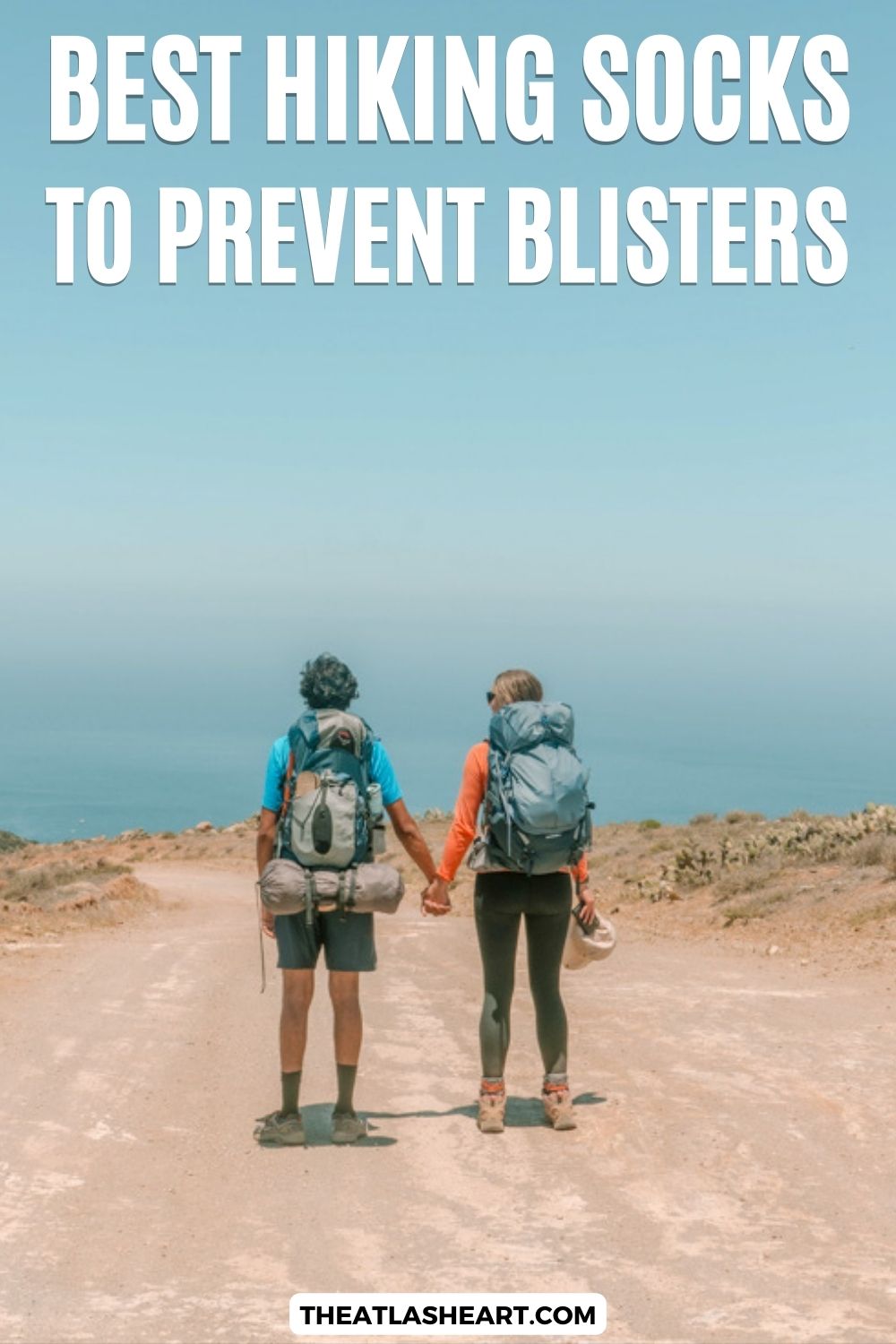
Pin this image for future reference


